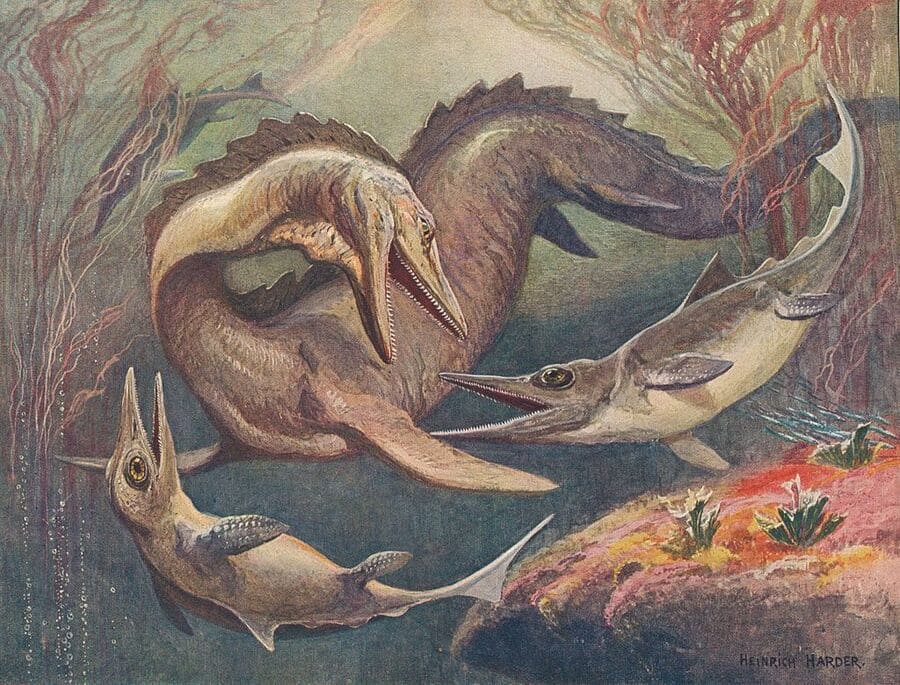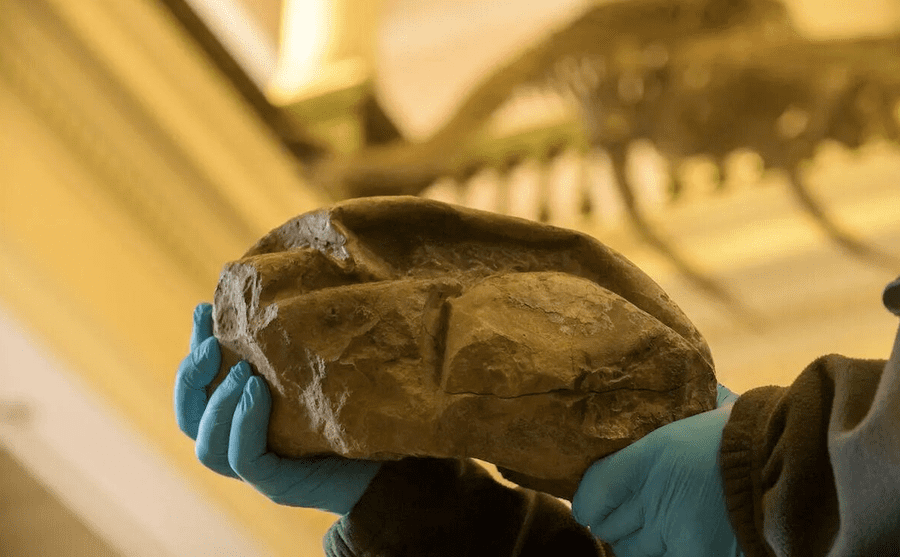A fossil egg has been found on Seymour Island, off the Antarctic Peninsula. The territory of Seymour Island is disputed by three countries: Argentina, which considers it a continuation of Tierra del Fuego and has given it the name of Marambio Island, Chile, which considers the island as part of the Chilean Antarctic Province, and Great Britain, which claims it as part of the British Antarctic Territory.
An extraordinary discovery was made by a Chilean scientific expedition in 2011. The group of scientists were on Seymour Island conducting scientific research, as several fossils of extinct species had been found in the past, and they discovered a fossil that measured 29 cm long and weighed 6.5 kg. The fossil resembled a slightly deflated and crumpled American football.
Scientists did not know what it was. After returning to the camp, they explained the find to the local geologists, all of whom expressed confusion about the object.
Subsequently, the object, which scientists named “the Thing”, was brought to Chile and exhibited at the Museum of Natural History. Several scientists who visited the museum were asked for their opinion about the mysterious “Thing,” but no one was able to respond. That was until, in 2018, paleontologist Julia Clarke of the University of Texas visited the Museum. After seeing the fossil, she suggested it might be a soft-shelled egg from a dinosaur-era marine reptile.

The largest fossil egg
Thus began joint studies by the National Museum of Natural History, the University of Chile and the University of Texas at Austin. Analysis of samples taken from the “Thing” led to the conclusion that it was indeed an egg and that the protein structure closely resembled that of contemporary lizards and snakes. The egg is the largest found to date from the dinosaur era and the second largest of all species. It is speculated to be the egg of mosasaurus, a marine reptile that lived about 66 million years ago. It had a minimum length of 8 meters and a maximum length of 17 meters.
A mosasaurus could weigh about 14 tons. It lived in the seas of Western Europe, Antarctica and North and South America.
This giant “lizard” was very common in the Cretaceous period. Several mosasaurus fossils have been found near the site where the egg was found. This is the first fossil of a soft-shelled egg, since it was previously thought that such fossils could not be found. This is because these eggs tend to decompose very quickly and leave no fossil trace.
In addition, it is surprising to note the size and weight of the egg. Until now it was believed that a soft-shelled egg could weigh a maximum of 700 grams. Here, however, we are dealing with a 6.5 kg egg!

What if it was a dinosaur egg?
Nature magazine published a study by Yale University in 2020 concluding that some dinosaur species reproduced by means of soft-shelled eggs while other species may have evolved into calcified eggs. This would explain why, even though many dinosaur eggs have been found, the eggs of certain species have never been discovered. It can therefore be deduced that they reproduced with soft-shelled eggs. As a result, some scientists are once again hypothesizing that the egg found on Seymour Island could be a dinosaur egg.
Meanwhile, Seymour Island continues to be a destination for scientific expeditions. Given the abundance of fossils found on the island, the hypothesis that there may have been a single, severe event that caused the sudden extinction of existing species has gained momentum. After examination of the marine fossils found on the island, a recent study suggests that a catastrophic event may have occurred in Antarctica. The consequences of the event would have caused major climatic changes that led to the mass extinction of prehistoric species. It is possible that this is the same event that caused the extinction of dinosaurs throughout the Earth.

